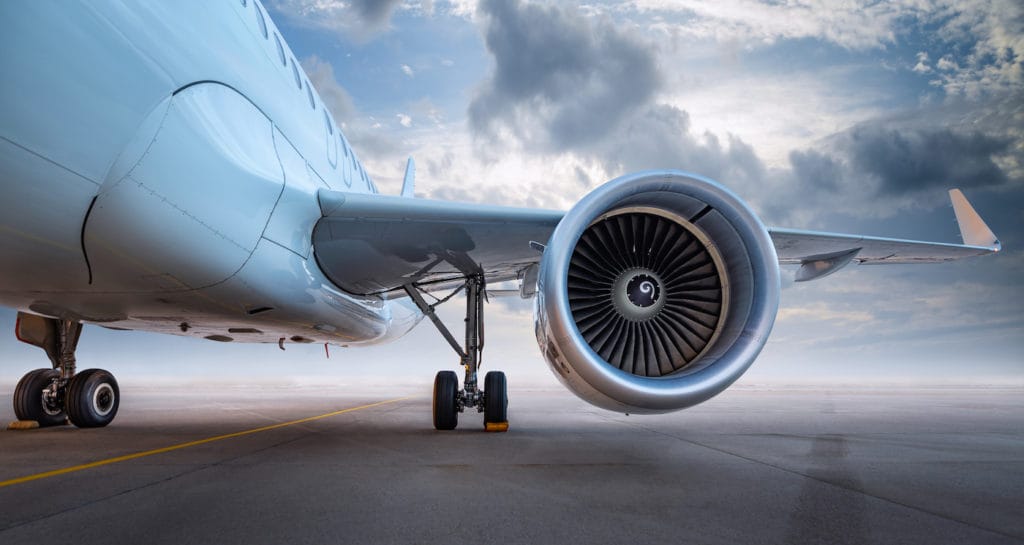

The tweet from Dr. Amish Shah caught my eye: “We experienced a medical issue on the flight back today, and I was asked to respond.” On this D.C. to Phoenix flight, Shah was called in to help a passenger suffering a severe allergic reaction, and Allergic Living asked me to investigate.
In our phone conversation, Shah’s first words were: “It was a very eventful flight.” His skills as an ER physician were put to good use, as he treated a passenger with a nut allergy suffering anaphylaxis, and an emergency landing would be required.
At the start of the five-hour flight, the American Airlines (AA) crew made an announcement asking passengers not to consume nuts because of a passenger on board with a severe allergy – a reference to the traveler who would soon experience a medical emergency.
In addition to being an emergency physician, Shah is a lawmaker representing a Phoenix district in the Arizona State Legislature. About 90 minutes into the flight, the crew announced they needed a physician’s help.
Shah quickly assessed the situation with the middle-aged woman, who’d brought the wrong purse – the one that did not contain her epinephrine auto-injector. The doctor asked the flight crew immediately for the emergency medical kit. The pulse oximeter inside was not working, so he says he initially used his Apple Watch to monitor her vitals. (The oximeter would work later when the batteries were replaced.)
Not seeing an auto-injector in the kit, he and another physician then drew up a syringe from a vial of epinephrine labeled 1 mg/mL (the strength used in injections for anaphylaxis). He noted to a resident physician assisting him that there were two different concentrations of epinephrine in the kit and, if switched up, that could cause harm. During the emergency, Shah was in constant contact with AA’s ground medical provider as well. The provider decided the plane would divert to Albuquerque to make an emergency landing.
So why the decision to make an emergency landing? Shah told me that before injecting the epinephrine, he got the patient to rate her symptoms out of 10. The woman, whose route of exposure to nuts is not clear, related feeling 8 out 10 (with symptoms of throat closing and tongue swelling). After the epinephrine, she initially felt better (3 out of 10). But she then worsened again, and began experiencing chest pain.
I asked the doctor why he had not given her a second dose of epinephrine. Shah says the passenger said the last time she had two doses of epinephrine, she’d experienced ventricular fibrillation (a form of arrhythmia). The decision was made that she needed medical attention in a hospital right away, so the plane made an emergency landing and was met by an ambulance.
Shah commends the American Airlines crew for their quick and professional response to this emergency. “The flight attendants were very caring, helpful and responsive.” But he raises a point of concern that we’ve covered before in Allergic Living in relation to in-flight medical kits: their lack of organization.

In late 2019, American Airlines began stocking Auvi-Q auto-injectors in their kits – a progressive move. However, Shah and another medical professional assisting only located that auto-injector after he gave the initial epinephrine dose by vial and syringe. The auto-injector would have been far easier to use, but they had no idea it was in there, and he describes the medical kit being “disorganized” – a jumble of medications and other equipment.
As allergic reactions can progress quickly, Shah made the decision to use the vial. There is research that asserts delayed administration of epinephrine can lead to fatal consequences.
The passenger with the severe reaction caught a break on this flight. Shah was on his way home from the American College of Emergency Physicians’ national conference. Not every plane will have a skilled ER trained physician on board, or one who knows how to use vials of epinephrine at the right concentration (the cardiac concentration of epinephrine was also in the kit).
Experience shows that epinephrine vials and syringes are harder to use in-flight than an auto-injector. Plus, such a shot is best given by a medical professional. This is why I continue to advocate for crew training in allergic emergencies. Even if the crew simply knew there was an auto-injector in the medical kit and what it looked like, they could have told the physician immediately.
At least this flight had an auto-injector in the kit, and Shah says that kit had a good array of medications. That is not always the case.
Allergic Living has reported earlier on flight medical kits being insufficiently stocked and, in relation to anaphylaxis, this is a widespread problem. In 2019, Dr. Mikhail Varshavski, a doctor known on TV and Instagram as “Dr. Mike” assisted in an anaphylaxis emergency on a flight from New York to Tel Aviv. Varshavski was shocked to find there was no epinephrine auto-injector in the flight medical kit. Instead, it contained only an epinephrine vial at the concentration for a heart attack, along with a syringe. He had to troubleshoot correcting the dosage.
Earlier this year, New York allergist Dr. Anna Nowak-Wegrzyn contacted me to relate that she was on a United Airlines flight when she was called upon to assist a passenger (unrelated to allergy). She said the flight attendants were wonderful, but “the medical black box did not contain epinephrine, a pulse oximeter or even a blood pressure monitor.” She said, “In fact, it had a label stating, ‘no epi vials in the kit’.”
This is truly frightening. We have reported in the past that Airlines for America, the carriers’ trade association, asked the Federal Aviation Administration (FAA) for a four-year exemption for its members in times of drug shortages. The FAA approved that exemption back in 2016. This permits most large carriers to fly planes without the five drugs normally required in their kits, if a supply issue has arisen. Two of the medicines are epinephrine – in differing doses for either anaphylaxis or heart attacks.
The bottom line is: we still have no idea how many emergency kits on airlines’ planes are missing epinephrine and whether the exemptions were renewed.
Senator Tammy Duckworth has been working to have the Federal Aviation Administration (FAA) regularly review the contents of the emergency medical kits on-board airplanes.
We reported in 2019 that the Aerospace Medical Association’s Air Transport Medicine Committee included recommendations for epinephrine auto-injectors on airplanes to the FAA during its next reauthorization for in-flight medical kits. Duckworth’s office confirmed the FAA has received the recommendation, but the issue is at a standstill as we all wait for FAA to respond.
The recent Washington to Phoenix emergency landing case, along with other situations we have reported, highlight concerns as to the actual contents of the in-flight medical kits. Issues include: how frequently they are refreshed, what equipment is missing, poor organization of the kit and the potential absence of any epinephrine, even in vial form. Shah related that 10 years ago, he assisted the NFL in standardizing medical and operational procedures including emergency equipment. I hope he teams up to help Senator Duckworth on a similar endeavor with airlines.
Duckworth’s office is looking to update the in-flight emergency kits to ensure the right equipment is there to treat emergencies in the air, including anaphylaxis. She calls this is a “public safety issue.” Thirty-two million Americans now have food allergies. We need these airline kits to include all the right medical equipment including epinephrine auto-injectors and to add anaphylaxis training for the flight crews. For public safety, this needs to happen in the very near future.
Lianne Mandelbaum is Allergic Living’s airlines correspondent, and the founder of NoNutTraveler.com.